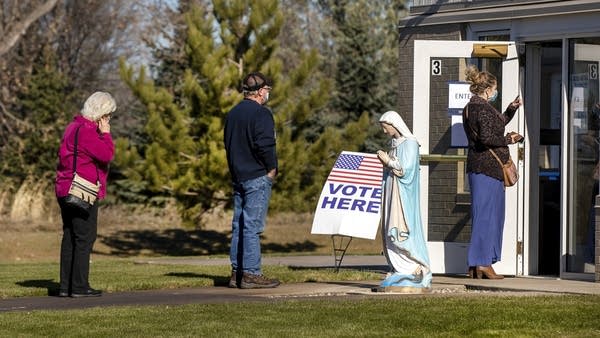Did we break a record? Minnesota election officials say it's close, but not yet

Voters wait in a short line outside at the Church of the Holy Spirit Tuesday in St. Cloud, Minn.
Paul Middlestaedt for MPR News
Go Deeper.
Create an account or log in to save stories.
Like this?
Thanks for liking this story! We have added it to a list of your favorite stories.


